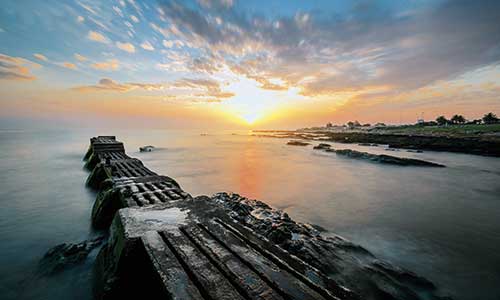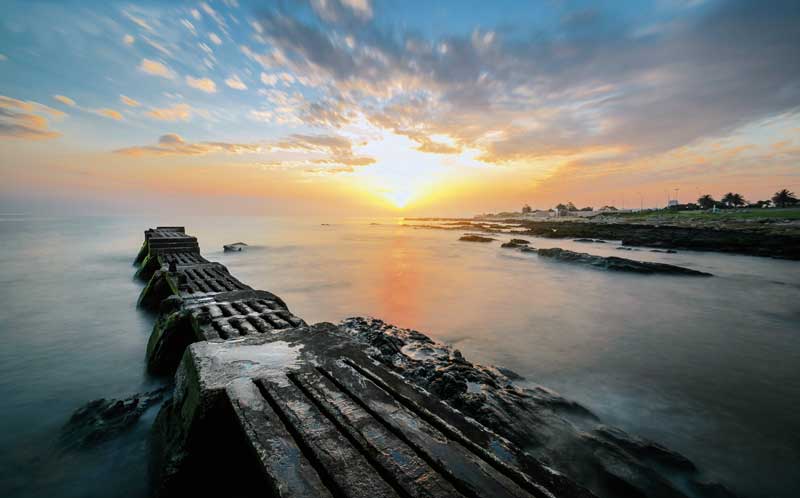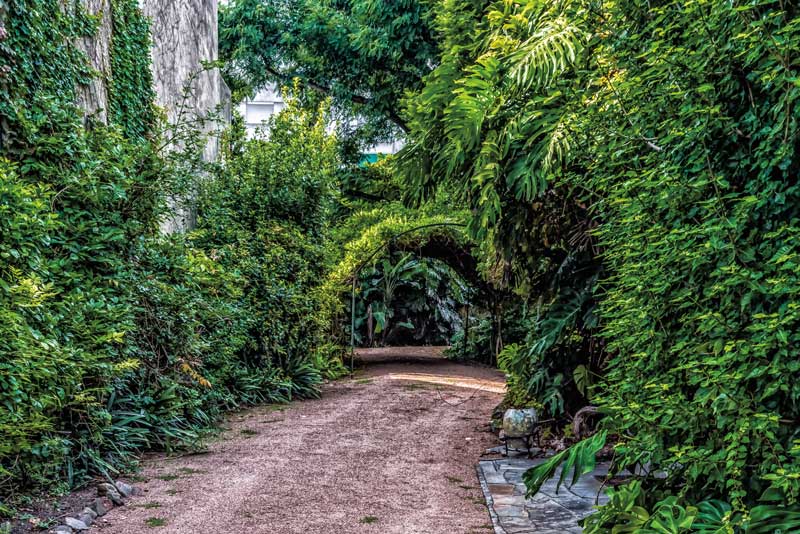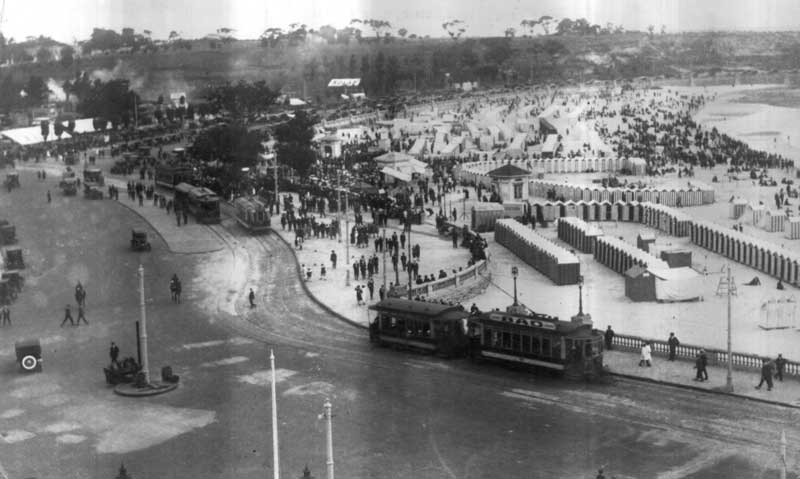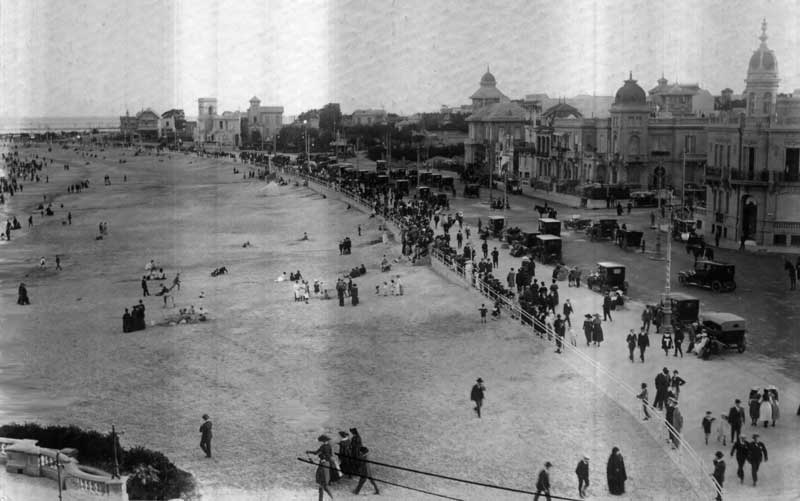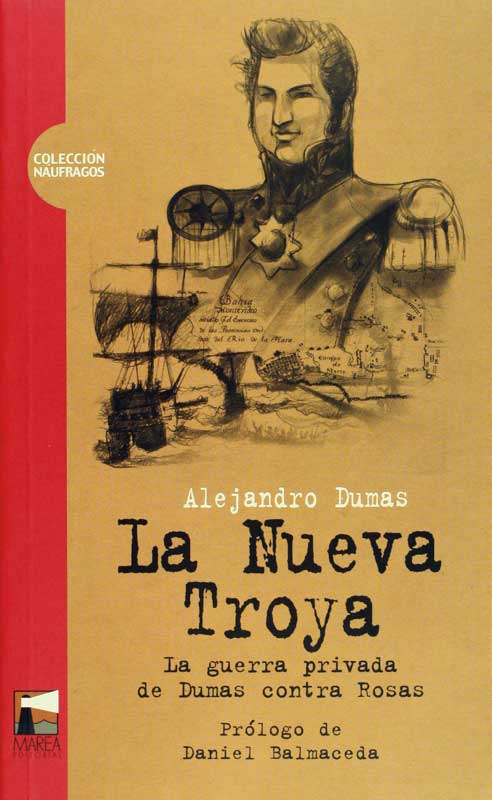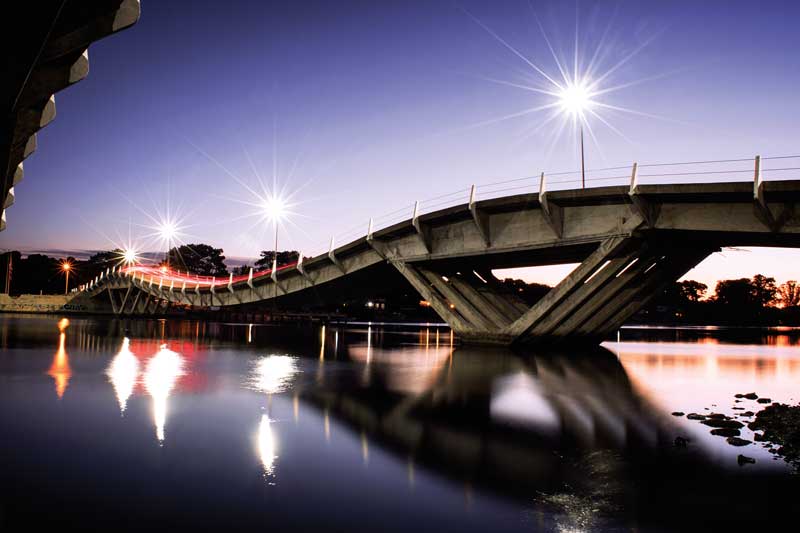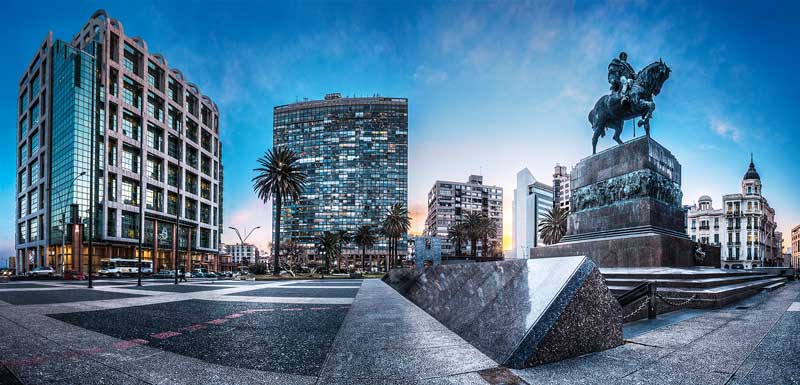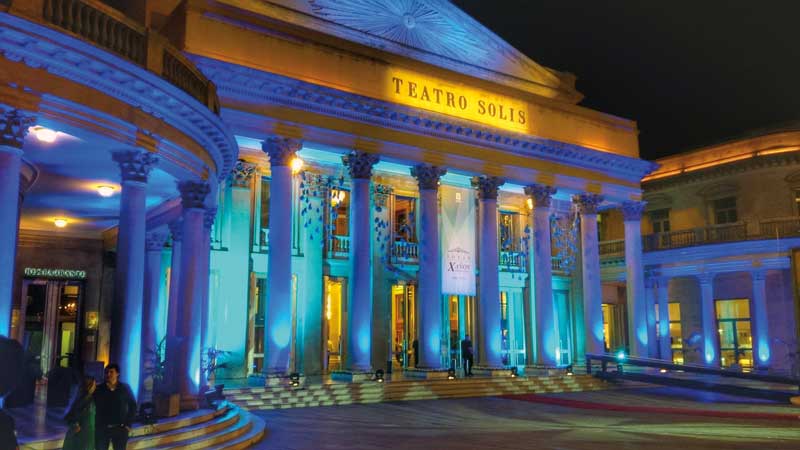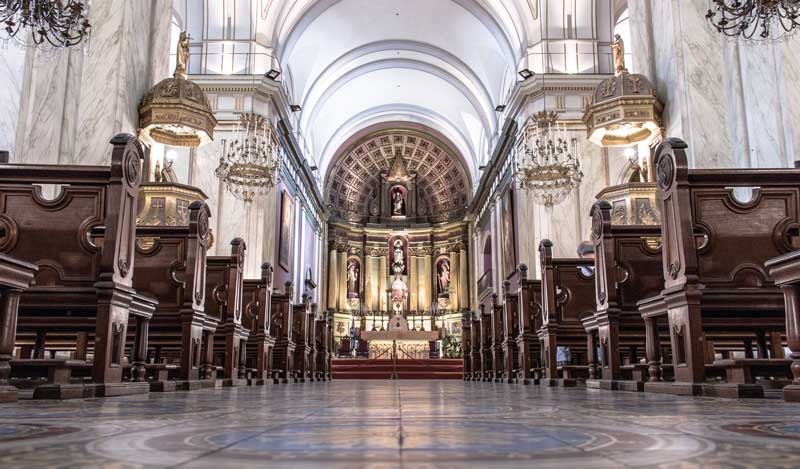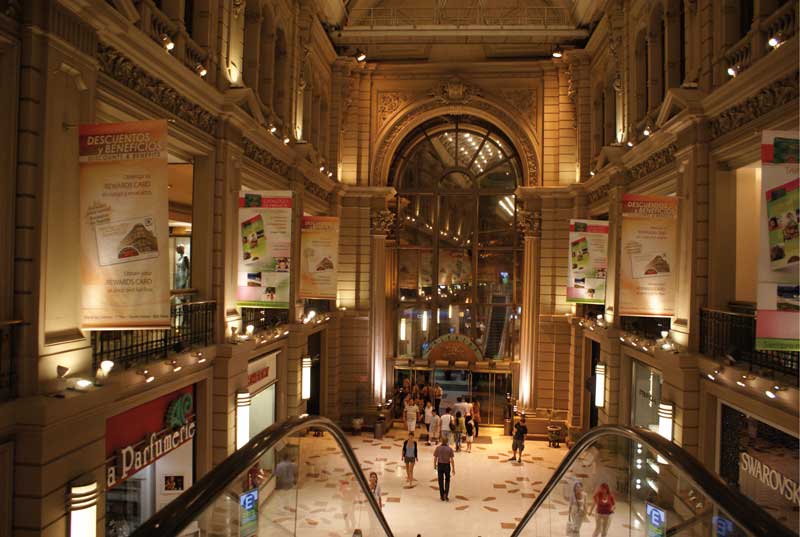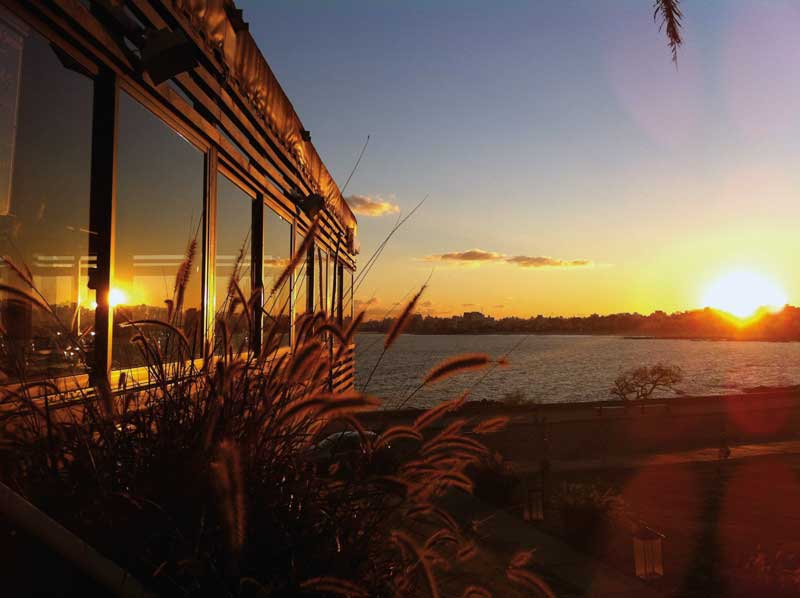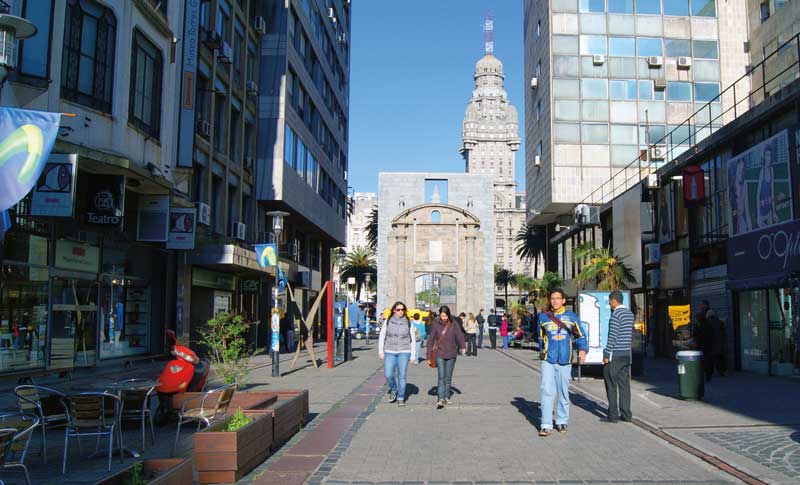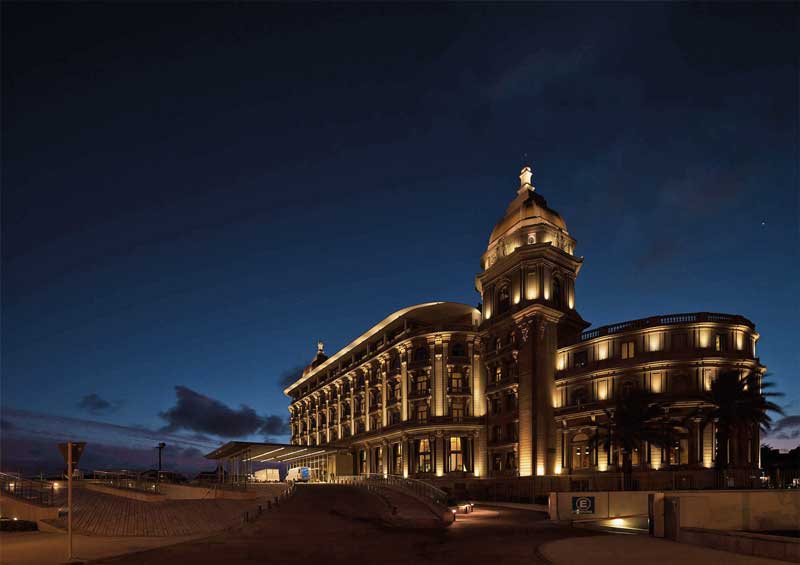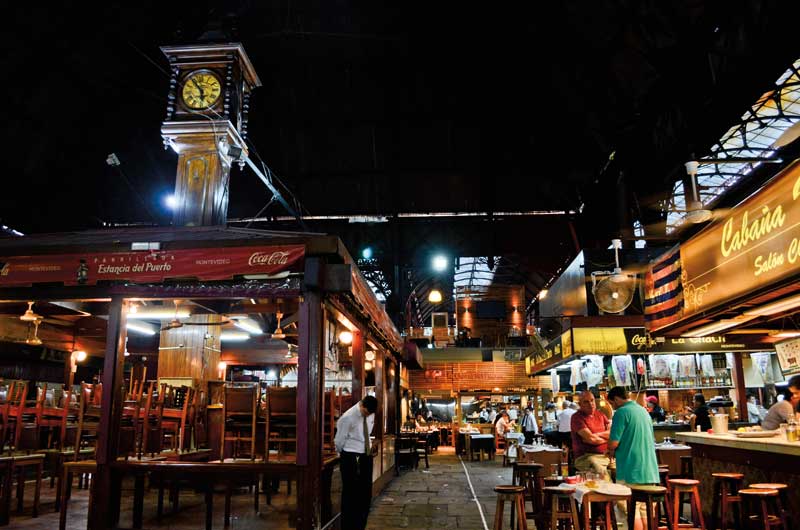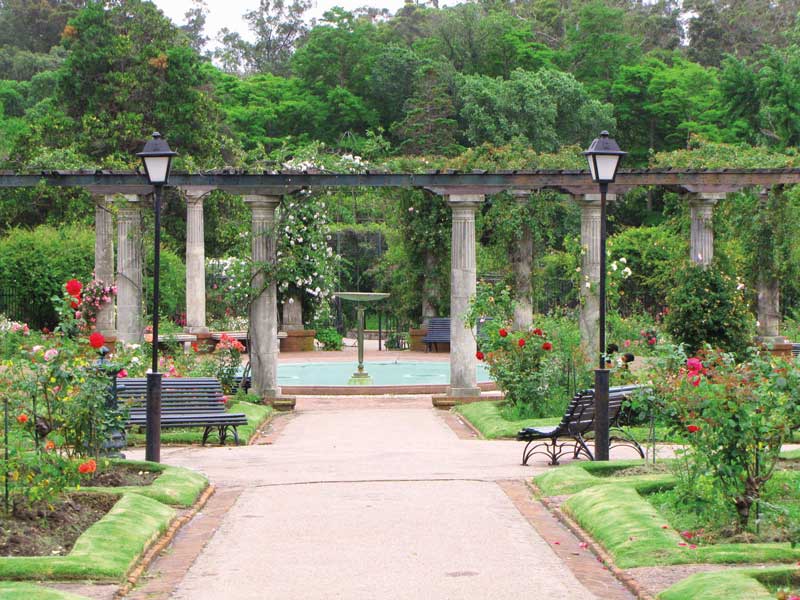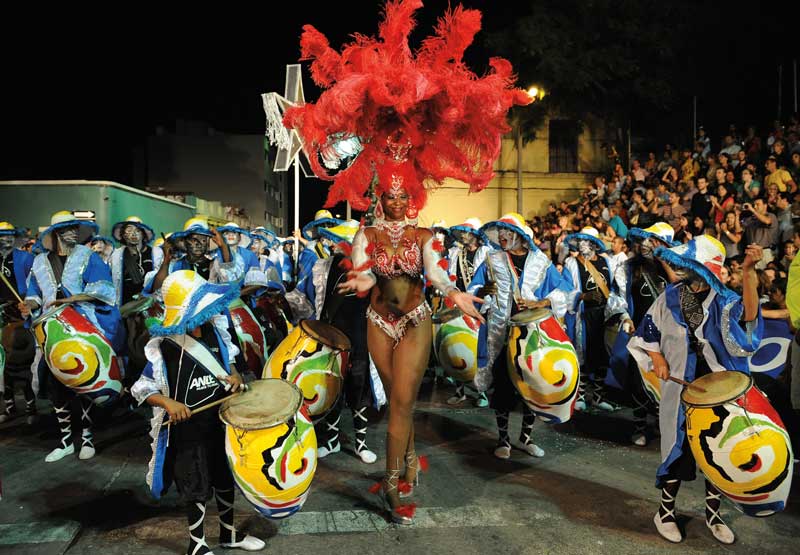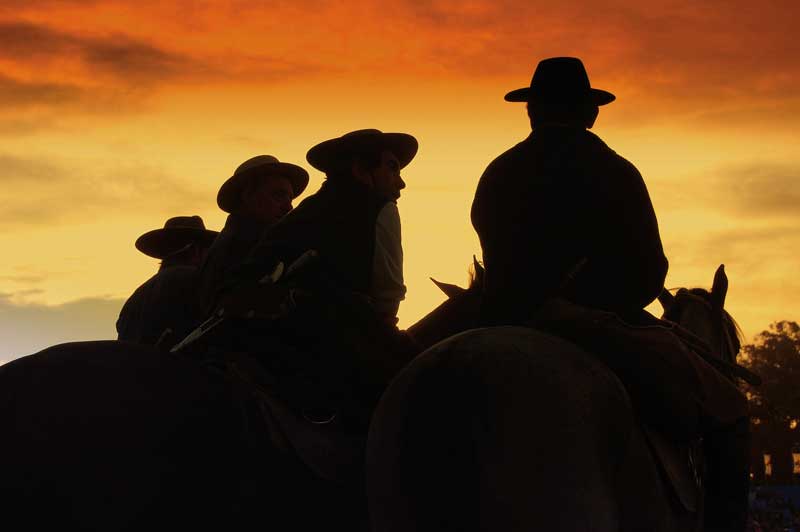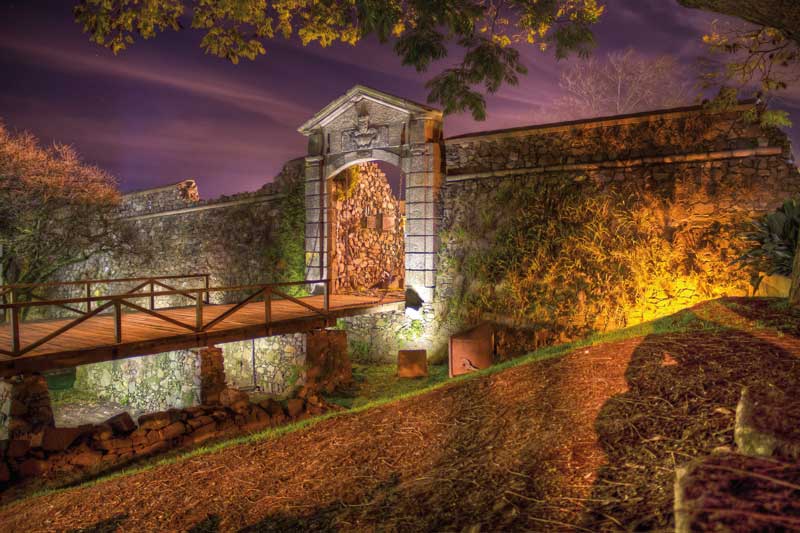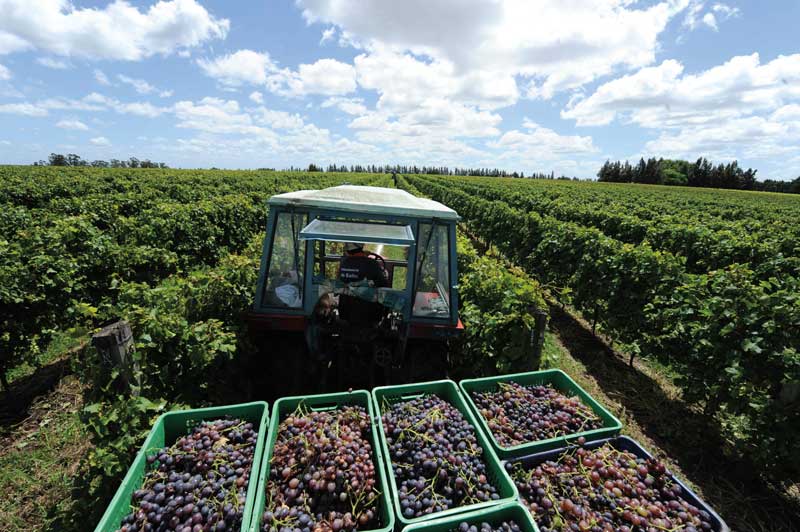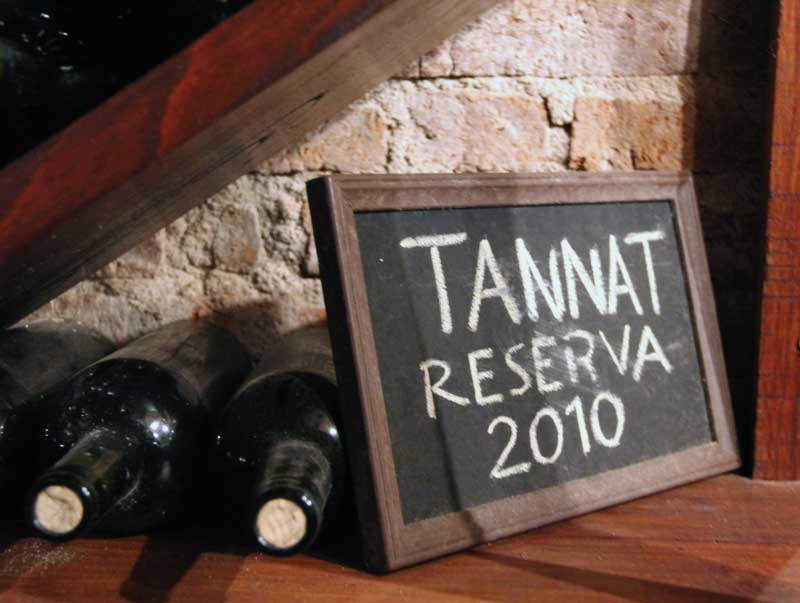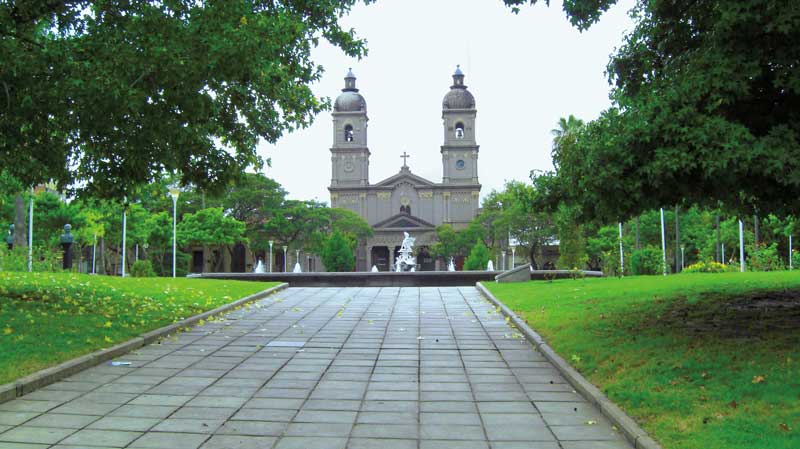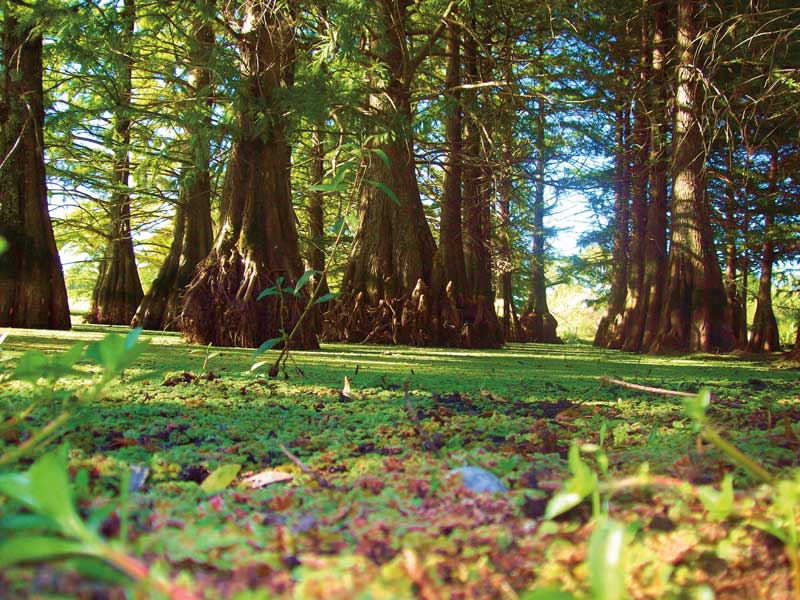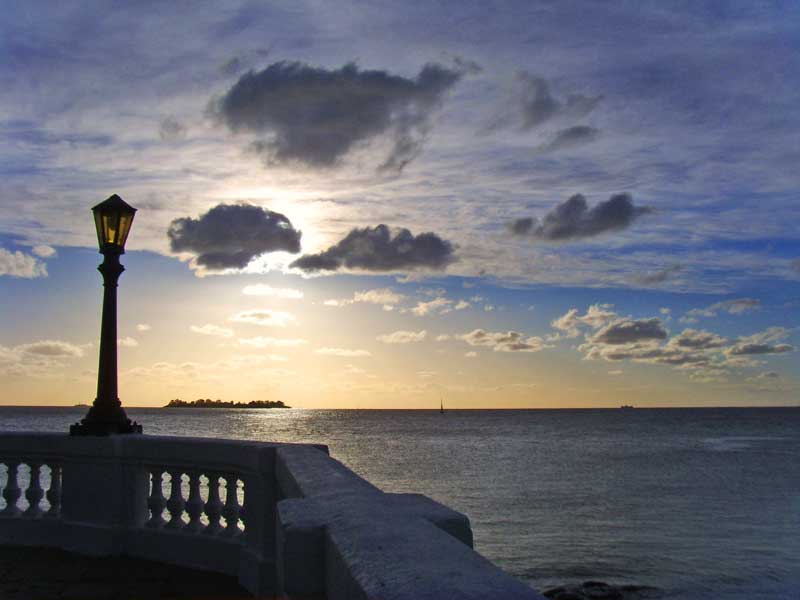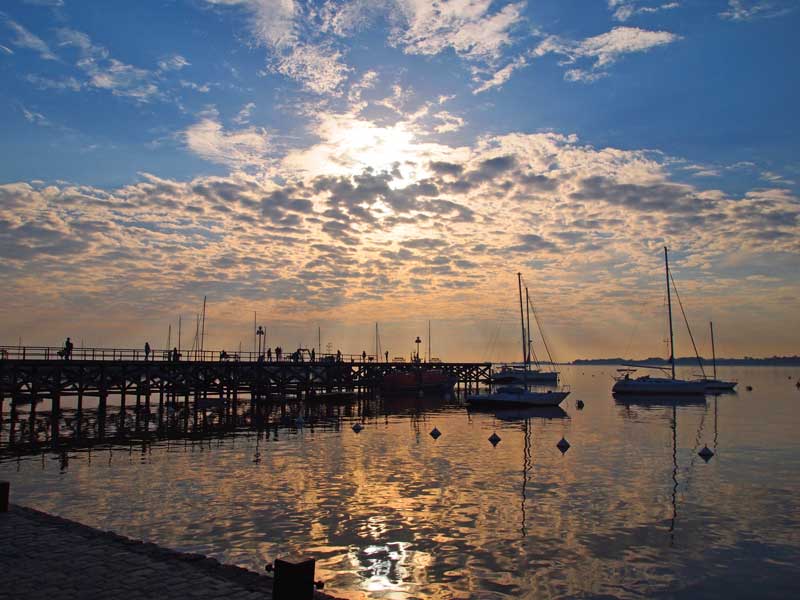In the Heart of the Southern Cone
The greatest treasure of the Oriental Republic of Uruguay lies in its population—3,458,828 people that came to be as a result of a prodigious ethnic mixture of different cultures. The contemporary Uruguayan is open, communicative, vibrant, determined, musical, poetic and philosophical, always willing to help. When you reach the shores or the borders of Uruguay, you will get the chance to prove it. This quality is proverbial and recognized worldwide in the people that populate the second smallest country in South America—the only one in the Americas that is completely outside of the tropics.
There are few places in the world, I should say none for its size, where the community consists of so many different nations. Here may be found native Spaniards, Brazilians, Italians, French, English, Portuguese, Hamburgese, Dutch, Swedes, Prussians, and sometimes Russians; also Americans and Sardinians.
(W. Wittle. in Journal of a Voyage to the River Plate)
Archeological discoveries establish that the first men inhabited this land approximately 10,000 years ago. These traces have been followed through relics like tools, stone carvings, hunting weapons, and more. The indigenous communities, mostly Guaraní—originated in the Brazilian Amazon—such as the Ohanás, Guananas, Guenoas, Bohanes, Minuanes, Arachans, and Charúas, were the most numerous and best known: a nomad village who also inhabited northeastern Argentina and southern Brazil.
It’s well known that the current Uruguayan culture possesses a minimal influence of this indigenous heritage that inhabited the land for 12,000 years. It is also documented that they were characterized by their great courage and their appreciation of earth. The Charrúas were decimated by consecutive climatic, migratory, and sanitary transformations, as well as their active participation in the war, until finally they were practically exterminated in the mid-19th century.
Scientific research has determined that descendants of the warrior chief Sepé are still living; an example of this is his great-grandson Bernardino García, "the last cacique charrúa" of Tacuarembó. A growing number of organizations of aboriginal descendants claim the right to be recognized as active participants in the national history.
Banda Oriental, 16th and 18th Centuries
1515 and 1516 marked the beginning of the Spanish conquest with the arrival of the expedition commanded by Juan Diaz de Solís to Río de la Plata (River of Silver), ordered by Ferdinand the Catholic; other theories assert that the first "discoverer" of the land was Amerigo Vespucci while in charge of a Portuguese expedition.
Initially, the Uruguayan territory was called La Banda Oriental, and for more than 100 years, colonization attempts failed for different reasons. In 1619, the Jesuits arrived and founded the village of Ibiricuará. On the other hand, the Portuguese occupied regions of the Atlantic coast near the mouths of the Amazon and Silver rivers. In 1680, Portuguese navigator Manuel de Lobo established Colonia del Sacramento. As a result of this, the massive landing of immigrants combines their different cultures throughout history for the creation of a new country.
The African slaves brought to the Americas contributed with a fundamental component of the Uruguayan people. They were introduced at Río de la Plata and came mainly from the coasts of Guinea, Congo, Angola and Mozambique. It is calculated that they were approximately 45,000 people, whose cultural presence is evident in the contemporary Uruguayan nation. Their descendants also demand those contributions to be fairly recognized.
Montevideo: The Beginning
To cut off the Portuguese’s advance—who were close to seizing the Bay of Montevideo—the Governor and Captain General of Rio de la Plata, Don Bruno Mauricio de Zabala, started to build the foundations of a new walled city, reinforced with artillery, a group of 110 soldiers, and 1,000 natives armed with a battery of 10 guns: San Jose Fort.
That’s how the construction of the citadel began, which lasted 40 years (1742-1782); its main buildings were the headquarters, the church, the market, and the courthouse. The first inhabitants of San Felipe and Santiago de Montevideo (former name of the city) arrived from the Canary Islands and Galicia. The architectural plan was designed by Pedro Millán, abiding by the chapters of urban legislation in the Laws of the Indies; this is why blocks were delineated in straight angles.
The citadel had an Arms Square at the center, and it was completely walled, with towers at each corner, and at the bottom was the moat that could be refilled at will from the sea, reason why it was only accessible through a drawbridge. It was built to serve as the naval base of the Spanish Royal Navy in Rio de la Plata; their warships patrolled the coasts of the American continent in the South Atlantic. 150 years later, the wall was destroyed and the open city of Montevideo was born.
Montevideo or the New Troy
There is a book of essays on a crucial chapter of the history of Montevideo called Montevideo or the New Troy, published in 1850 and written by the famous litterateur Alexandre Dumas Sr., that has become an invaluable historical testimony of the position of Montevideo during the Great War (1839–1843). The book is written from the point of view of the people who were under siege, and although they were so few in numbers, they were able to confront powerful armies, fact that moved the author. He narrated passionate episodes, such as the one about Giuseppe Garibaldi, who fought at the front of the "Italian Legion" with a small fleet of ships, and in the Battle of Tres Cruces on the outskirts of the wall of Montevideo. The goal of the great writer Alexandre Dumas was to request France’s aid to Montevideo.
Uruguay: A Country That Looks Toward the Future
After centuries marked by constant change and different confrontations, by the start of the 20th century, the country begins to be considered as a "model" place in the American continent, based on the population’s quality of life. Most of the people were literate by 1877 after free, compulsory and secular education was established. As for sports, Uruguay was the first country to carry out the celebration of the Soccer World Cup in 1930 in the legendary Estadio Centenario, where the national team was the winner.
Currently, Uruguay ranks first in Latin America in terms of democracy, global peace index, low corruption and prosperity.
Enjoying 21st-Century Montevideo
Since 2006, the city of Montevideo is considered one of the best cities to live in Latin America. The streets are full of attractions: tourist and architectural treasures, as well as a vibrant cultural life with plays, artistic shows from all disciplines, some with a classical approach, but also alternative proposals, museums, cultural centers, art galleries, traditional parties, sun and beach, cruises, infrastructure and water sports. The list is long and diverse.
La Rambla
Considered as one of the symbols of the city, La Rambla is a 20-kilometer avenue along the coast, with green areas, parks, gardens, suitable areas for exercise, the opportunity to share a cup of mate tea or fishing, while the streets will guide you from the port and the beaches on the banks of Río de la Plata, to the emblematic neighborhoods of the capital.
The Gateway of the Citadel
It connects the Old City to downtown; it served as the original entryway of the Citadel of Montevideo, built during the Spanish conquest. It initially had a rake and drawbridge. The gateway is the only aspect of it that has been preserved from this historical site.
Plaza Independencia
This emblematic square was designed in 1836. In it, the monument to the hero José Artigas is most prominent—standing 17m tall and weighing 30t—along with the Palace of Justice and the Artigas Mausoleum. This is the natural seat for the official public acts in the country since the late 19th century.
Rodó Park
43ha make up this space, considered as a pivotal part of the city. Here, it is possible to enjoy a great variety of trees that surround the lake, to cruise on pedal and rowing boats; its beautiful bridges offer countless strolling options. There is also an Amusement Park for children‘s delight. In the Summer Theater, between February and March of each year, the official contest of the longest carnival of the planet takes place—it lasts a month and a half. After its inauguration in 1956, there have been countless international shows and artists on stage. We also recommend a visit to The National Museum of Visual Arts, which houses the largest public painting and sculpture collection in Uruguay.
Solis Theater
It was inaugurated on August 25, 1856 with the opera Ernani by Giuseppe Verdi; the theater and its main stage are cataloged as the greatest reference of performing arts of the country. It is home to the National Comedy and the Philharmonic Orchestra of Montevideo. Among the artistic personalities that have performed in its rooms are: Arthur Rubinstein, Andrés Segovia, Anna Pavlova, Isadora Duncan, Vaslav Nijinsky, to mention a few; it continues to provide an art program of the highest quality in its two rooms. It also offers guided tours, a conference hall, a showroom, a photo gallery, a research and archive center, a gift shop, a cafe and a restaurant.
Buenos Aires SN, 11000 Montevideo, Uruguay
+598 19503323
http://http://www.teatrosolis.org.uy/index_1.html
The Metropolitan Cathedral Basilica
Known as the Matriz Church, it is located in the beautiful Plaza Matriz that preserves the essence of a colonial main square. On October 21, 2017, it will be 214 years since it was founded and since it was elevated in category to Metropolitan Cathedral by Pope Leo XIII in 1897. The current building is the third to host the church, and it is dedicated to the Immaculate Conception and the tutelary saints of the city: St. Philip and St. James.
De lunes a viernes: 12:00 y 17:00 hrs
Sábados: 17:00 hrs
Domingos: 11:00 y 17:00 hrs
D: Ituzaingo 1373, 11000 Montevideo, Uruguay
T: +598 2915 7018
http://icm.org.uy/
Walking Around the City
A visit to the Carrasco neighborhood is a must if you wish to admire the richness of the urban layout, the sumptuous architecture and the prominent greenery in the streets, squares and gardens. The main building is Hotel Carrasco, the image of the city during most of the 20th century. From Punta Gorda you can appreciate the best views of Montevideo, Rio de la Plata’s banks, and Pocitos—once named the Biarritz of South America. Peatonal Sarandí and 18 de Julio Avenue are ideal to admire old buildings, mansions, squares, as well as luxurious shops, bookstores, hotels, museums, restaurants and pubs. The city has modern shopping centers where you will find boutiques of renowned designers and all kinds of stores and items; the most recommended are Punta Carretas Shopping, Montevideo Shopping, Shopping Tres Cruces and Portones Shopping.
Uruguay’s Unique Experiences
We recommend visiting the cafés and bars of Barrio Cordón like Paulier and Guaná, Montevideo Sur, Unibar and La Giralda, as well as trying the Uruguayan gastronomy with Port Market’s culinary offer. You can appreciate the exquisite architecture of the city, or stroll through the Botanical Garden, enjoy the connection with the Uruguayan cultural expressions like the carnival, the gaucho, the candombe, to treasure the literary works of great writers like Mario Benedetti, Eduardo Galeano, Horacio Quiroga, Juan Onetti, Juana de Ibarbourou, Delmira Agustini, Idea Vilariño (the list is infinite), dance and sing to the rhythm of tango, milonga, and murga; to walk through the Carlos Gardel House Museum, the paradigm of southern singers.
A getaway to Colonia del Sacramento will take you to the onset of Uruguay's history. You can enjoy the harvest of the Uruguayan grape Tannat, or a trip to ancient times, to the beginning of the lower Cretaceous, at the Carlos Reyles Village, in the Durazno Department. Or you can visit the Santa Lucia Wetlands National Park, the Palace Cave (a national heritage), and the natural surroundings of the city of Treinta y Tres—a place significant in the development of traditional music. Nature lovers have the chance to experience a close encounter with sea lions over at the Cabo Polonio Reserve, to be amazed by the landscapes of Quebradas del Norte and the Esteros de Farrapos and Islands of the Uruguay River National Park.
The natural freshwater reserve of the Guaraní aquifer, shared by Uruguay, Argentina, Brazil and Paraguay, is one of the largest on the planet.
This is also the perfect sailing destination, since Uruguay is the second South American country with the highest quality of port infrastructure. In this territory there are 15 ports, out of which eight are commercial ports located in different areas of the country: Montevideo, Nueva Palmira, Colonia, Fray Bentos, Paysandú, Juan Lacaze, La Paloma and Salto, all under a free port regime. On the other hand, there is a vast range of beaches across the country. Additionally, the coasts are famous for offering the possibility of whale watching; they arrive to these waters annually between July and November.
Uruguay has a total of 13 million head of cattle, which results in an average of 4.5 cattle per inhabitant in the country.
Text: ± Photo: DREAMSTIME / URUGUAY DESDE LO ALTO / MUBY VAR / WIXTATIX / MINUTO UNO / ANDRÉS BENTANCOURT / MARCELO VIDAL / PINIMG / PANORAMIO / GAUVIN LAPETOULE / DLIV / FARM8 / CMSS / SSL / HOTELES DE MONTEVIDEO / FEDERICO CAIROLI / GETTYIMAGES / EDUARDO AMORIM / GRITO ASENCIO / RECREO VIRAL / MSSFOHH / CHRISTIAN-CORDOVA / ALETEIA SP / TRAVEL URY / KN3 / CON DESTINOS SA / CMS / AARON PETERSON / PABLO JORDAN / GAUVIN LAPETOULE / BP

